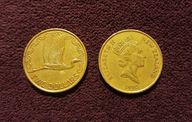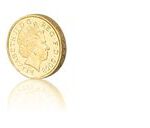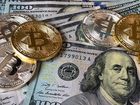Where to Buy Fake Gold: A Comprehensive Guide for Researchers
Introduction
In today’s complex world of commodities, the allure of gold remains strong. However, along with the genuine article, a shadowy market of fake gold exists. As a researcher, it is essential to understand how to identify and avoid fake gold, and equally important is knowing where to buy genuine gold. This comprehensive guide will equip you with the knowledge needed to navigate this intricate landscape.
What is Fake Gold?
Fake gold refers to any material that mimics the appearance of real gold but lacks its inherent value. It can take various forms, from gold-plated items to sophisticated counterfeits. Recognizing fake gold is crucial for safeguarding your investments and avoiding fraudulent transactions.
The Prevalence of Fake Gold
The prevalence of fake gold is a pressing concern, with counterfeit gold products circulating in both physical and digital marketplaces. It’s not limited to just small-scale schemes; even larger institutions have been duped. Therefore, understanding how to identify fake gold is paramount.
The Importance of Knowing Where to Buy Genuine Gold
When conducting research or considering gold as an investment, knowing where to buy genuine gold is fundamental. The repercussions of acquiring fake gold can be significant, leading to financial loss, legal issues, and ethical dilemmas.
Identifying Fake Gold
To avoid being deceived by counterfeit gold, you must be adept at identifying it. There are two primary methods for this:
Visual Inspection
1. Color and Luster
Real gold exhibits a distinct, warm yellow color and a unique luster that’s difficult to replicate. Counterfeit gold may appear too bright, dull, or exhibit unusual colors.
2. Hallmarks and Stamps
Authentic gold items often bear hallmarks and stamps, denoting their purity and origin. Counterfeiters may attempt to replicate these marks, but careful examination can reveal discrepancies.
Testing Methods
1. Magnet Test
Gold is not magnetic, so if a piece of jewelry or bullion sticks to a magnet, it’s likely fake. However, this is not foolproof, as some other materials may also not be magnetic.
2. Acid Test
A common method is to apply nitric acid to a small scratch on the item. If the gold is genuine, it will not react or change color. Fake gold may discolor or dissolve when exposed to acid.
3. Specific Gravity Test
This test involves measuring the item’s density and comparing it to the known density of gold. Genuine gold has a specific gravity of approximately 19.32 g/cm³.
Risks of Buying Fake Gold
Understanding the risks associated with fake gold is crucial for researchers:
Financial Loss
Investing in fake gold can lead to significant financial losses. You may pay a premium for counterfeit items that hold little to no value.
Legal Consequences
In some jurisdictions, buying or selling counterfeit gold can have legal consequences, including fines and imprisonment. Researchers should always operate within the bounds of the law.
Ethical Concerns
Supporting counterfeit gold markets indirectly promotes illegal activities and unethical practices. Researchers should strive to uphold ethical standards in their work.
Where to Buy Genuine Gold
When conducting research or considering gold investments, it’s essential to know where to purchase authentic gold. Here are some reputable sources:
Reputable Jewelry Stores
Established jewelry stores with a long history of customer satisfaction are generally reliable sources of genuine gold items. They often carry gold jewelry and some investment-grade bullion.
Bullion Dealers
Specialized bullion dealers focus on precious metals, making them excellent choices for purchasing gold bars and coins. They typically offer a wide range of products, including those with high purity.
Online Retailers
Reputable online retailers can be convenient sources for gold purchases. However, exercise caution, and only buy from trusted websites with secure payment methods.
Government Minted Coins
Coins produced by government mints are typically authentic and come with guarantees of weight and purity. Popular examples include the American Gold Eagle and the Canadian Maple Leaf.
Tips for Avoiding Fake Gold
To further minimize the risk of acquiring fake gold, follow these tips:
Research and Education
- FAQ: What resources can I use to educate myself about gold authenticity?
- Research credible sources, attend seminars, and read books on gold authenticity. Websites like the World Gold Council and government mints often provide valuable information.
Seek Recommendations
- FAQ: Is it safe to rely on recommendations from friends or colleagues?
- Recommendations from trusted sources can be valuable, but always verify the information independently.
Verify Seller Credentials
- FAQ: How can I check a seller’s credentials?
- Check for licenses, memberships in industry associations, and customer reviews. Verify the seller’s reputation before making a purchase.
Insist on Certification
- FAQ: What is a certification and why is it important?
- Certification from recognized institutions guarantees the authenticity and quality of gold products. Insist on certificates of authenticity when buying gold.
Red Flags When Buying Gold
Keep an eye out for these warning signs when considering a gold purchase:
Unrealistic Prices
If a deal seems too good to be true, it probably is. Be wary of sellers offering gold at significantly lower prices than the market rate.
Lack of Transparency
Avoid sellers who are reluctant to provide detailed information about the gold’s origin, purity, or certification.
Pressure Sales Tactics
Steer clear of sellers who use high-pressure tactics to push you into making a quick purchase decision. Take your time to research and evaluate your options.
Case Studies
Exploring real-life examples of fake gold incidents can provide valuable insights into the risks and consequences associated with counterfeit gold. Researchers can learn from these cases and apply the knowledge gained to their work.
Conclusion
In the realm of gold, knowledge is your most valuable asset. As a researcher, understanding how to identify fake gold and knowing where to buy genuine gold is essential. By following the guidelines presented in this comprehensive guide, you can protect your investments, uphold ethical standards, and make informed decisions in the complex world of gold trading and research. Always prioritize due diligence and remember that authenticity is the key to the enduring allure of gold.
















